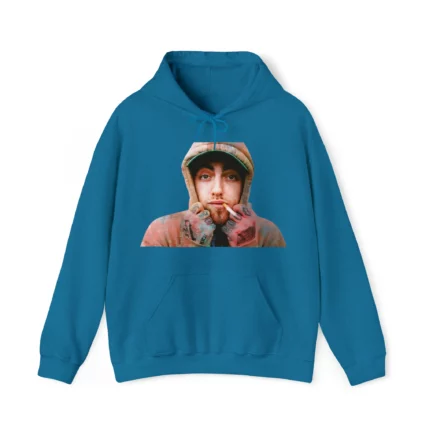Pakistani women’s clothes hold a special place in the cultural fabric of Pakistan, reflecting the country’s rich heritage, traditions, and regional diversity. These garments are not just pieces of fabric but symbols of cultural identity, pride, and social status. From vibrant shalwar kameez to intricately embroidered lehengas, the traditional attire worn by Pakistani women during cultural celebrations carries deep significance. In this blog, we will explore the importance of womens Pakistani clothes in cultural festivities, delving into their historical background, regional variations, and the role they play in preserving cultural traditions.
Historical Significance of Women’s Pakistani Clothes
The traditional attire of Pakistani women has evolved over centuries, influenced by various civilizations, including the Indus Valley, Mughal Empire, and British colonial rule. Each period left its mark on the clothing styles, resulting in a rich tapestry of designs, fabrics, and embellishments.
Influence of the Mughal Era
The Mughal era, in particular, had a profound impact on Pakistani fashion. The Mughals introduced intricate embroidery, luxurious fabrics like silk and velvet, and elaborate jewelry, which became integral to women’s clothing. The shalwar kameez, a staple in Pakistani wardrobes, traces its roots to this period, blending Persian and Indian styles.
Post-Independence Adaptations
Following Pakistan’s independence in 1947, there was a resurgence of interest in traditional attire as a means of asserting national identity. Designers began to revive and reinterpret traditional styles, creating a fusion of old and new. This period saw the rise of the modern shalwar kameez and other traditional outfits, which became a symbol of cultural pride.
Regional Variations in Women’s Pakistani Clothes
Pakistan is a diverse country with distinct regional cultures, each having its unique traditional attire. These regional variations add to the richness and diversity of Pakistani women’s clothes.
Punjab
In Punjab, women typically wear brightly colored shalwar kameez with heavy embroidery and mirror work. The dupatta, a long scarf, is an essential part of the ensemble, often adorned with intricate designs. During cultural celebrations like weddings and festivals, women opt for heavily embellished lehengas and ghararas, showcasing the region’s love for vibrant hues and detailed craftsmanship.
Sindh
Sindhi women are known for their ajrak prints and mirror work. The traditional attire includes the Sindhi sari and the lehenga choli, often featuring intricate embroidery and patchwork. The bold colors and unique patterns of Sindhi clothing make it stand out during cultural celebrations.
Balochistan
Baloch women wear loose, flowing dresses known as pashk. These dresses are adorned with heavy embroidery and beadwork, reflecting the tribal aesthetics of the region. The vibrant colors and intricate patterns make Baloch attire a striking sight during cultural events.
Khyber Pakhtunkhwa
In Khyber Pakhtunkhwa, women wear modest yet elegantly embroidered shalwar kameez. The use of intricate thread work and the choice of subtle, earthy colors are characteristic of this region’s traditional attire. The addition of a shawl, often embroidered or adorned with fringe, completes the ensemble.
Role of Women’s Pakistani Clothes in Cultural Celebrations
Women’s Pakistani clothes are more than just attire; they are an essential part of cultural celebrations, symbolizing tradition, beauty, and identity. Each garment tells a story, connecting the wearer to their heritage and community.
Weddings
Weddings are one of the most significant cultural celebrations in Pakistan, and the attire worn by women during these events is nothing short of spectacular. Bridal outfits, such as heavily embroidered lehengas, ghararas, and shararas, are crafted with meticulous attention to detail. The use of luxurious fabrics, intricate beadwork, and traditional jewelry complete the bridal look, making it a true reflection of Pakistani cultural heritage.
Eid Celebrations
Eid, a major Islamic festival, is another occasion where women’s Pakistani clothes play a vital role. Women don new clothes, often specially designed for the occasion. The outfits range from elegant shalwar kameez to sophisticated saris, with a focus on bright colors, fine fabrics, and intricate embroidery. The choice of attire for Eid reflects joy, gratitude, and a sense of community.
Festivals and Cultural Events
Various regional festivals and cultural events also highlight the significance of traditional attire. For instance, during Basant, the kite-flying festival in Punjab, women wear colorful clothes to match the vibrant atmosphere. Similarly, during the Sindhi festival of Thadri, women dress in traditional Sindhi attire, showcasing the cultural richness of the region.
Preservation of Cultural Heritage Through Clothing
Traditional Pakistani women’s clothes are not just a reflection of cultural identity but also a means of preserving and promoting cultural heritage. In a rapidly globalizing world, where modern fashion trends often overshadow traditional styles, the continued popularity and adaptation of traditional attire ensure that cultural heritage remains alive and relevant.
Role of Designers and Fashion Industry
Pakistani designers play a crucial role in keeping traditional clothing relevant. By incorporating traditional elements into contemporary designs, they create outfits that appeal to both the younger and older generations. Fashion shows, cultural exhibitions, and international platforms have helped Pakistani traditional attire gain recognition and appreciation worldwide.
Influence on Diaspora Communities
For the Pakistani diaspora, traditional clothing is a way to stay connected to their roots. During cultural celebrations abroad, Pakistani women proudly wear traditional attire, showcasing their heritage to the global community. This practice not only preserves cultural traditions but also promotes cross-cultural understanding and appreciation.
Discover Affordable Elegance with Filhaal UK
For those seeking the perfect blend of tradition and affordability, Filhaal UK stands out as the number one clothing brand in the UK for cheap Pakistani clothes. Our extensive collection features exquisite Shalwar Kameez, stunning sarees, and elegant Lehengas, all crafted with intricate detail and high-quality fabrics. At Filhaal UK, we believe that everyone should have access to stylish and authentic Pakistani attire without breaking the bank. Explore our online store to find the latest designs and enjoy the convenience of shopping from home while experiencing the rich heritage of Pakistani fashion at unbeatable prices.



